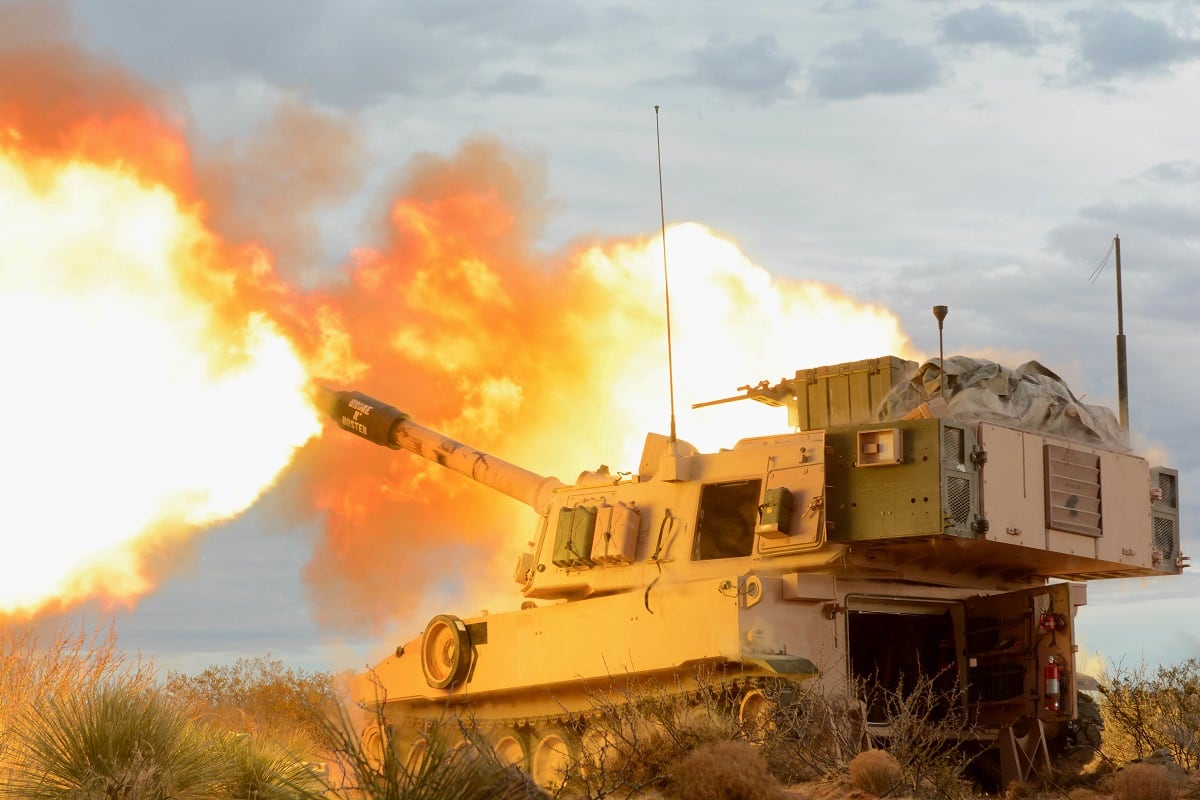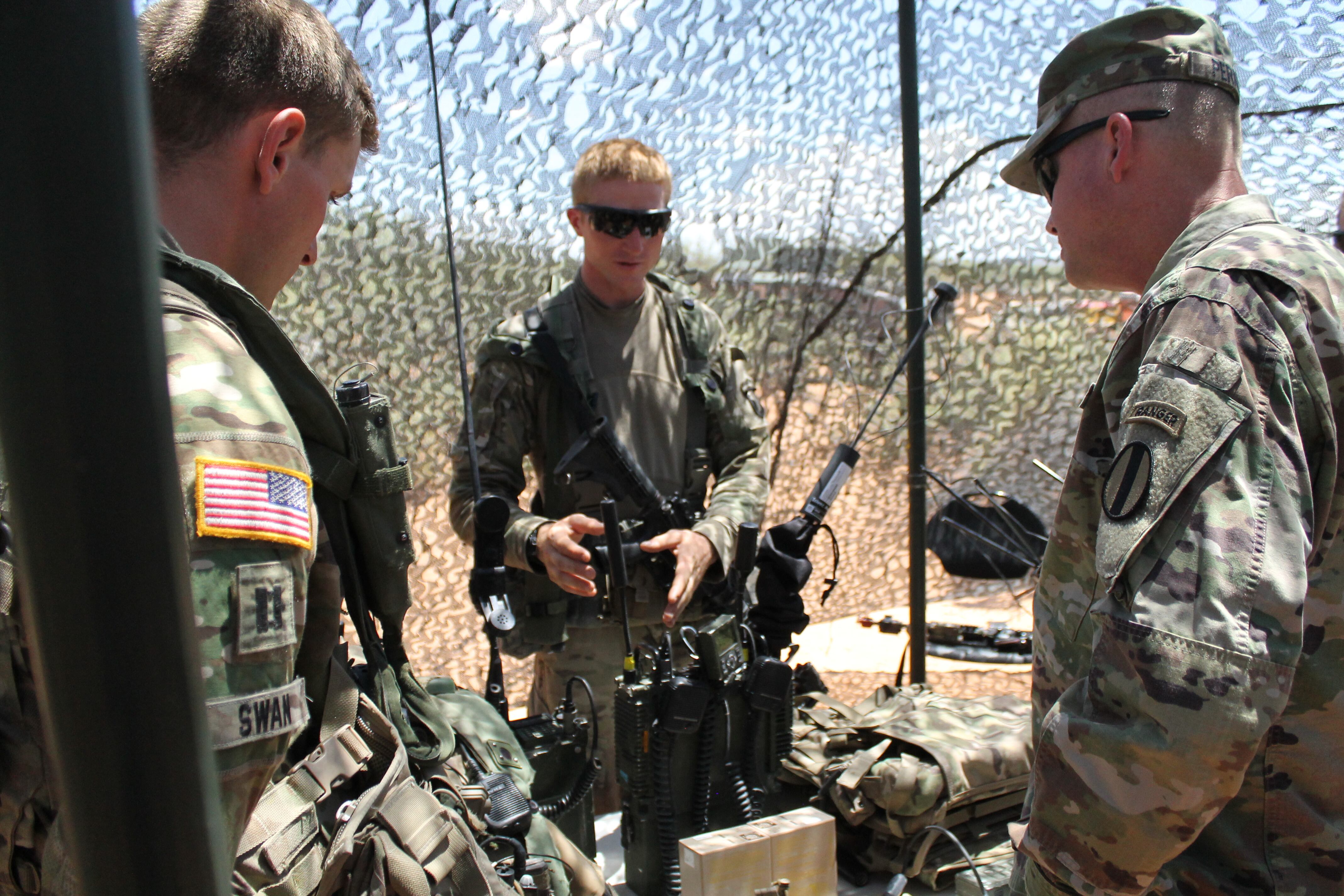WASHINGTON — The U.S. Army’s Rapid Capabilities Office is delving into a few long-range fires projects, which ventures from its original priorities set when the office was stood up roughly a year and a half ago.
The RCO was established in August 2016 to address some of the Army’s most pressing capability gaps by rapidly prototyping and fielding systems to units within one to five years. The new office has been laser-focused on three priorities: cyber, electronic warfare, and position, navigation and timing.
But with the service’s No. 1 modernization priority being Long-Range Precision Fires, or LRPF, it’s no surprise the RCO was tasked to work on meeting some immediate capability gaps in the area in addition to its other three efforts.
The RCO is working on two separate projects that are related to long-range fires, Doug Wiltsie, the Army’s outgoing RCO director, told Defense News in an April 5 interview. Wiltsie is soon set to retire from the Army.
The office has had several conversations with the one-star general newly in charge of the Army’s LRPF modernization efforts to ensure what the RCO is synced with the Army’s vision. Brig. Gen. Stephen Maranian, who is in charge of the LRPF cross-functional team that falls under the newly formed four-star Futures Command, told Defense News in March that it was tackling precision fires modernization in three separate ways.
The first would extend the range of cannon artillery; the second addresses deep-strike capabilities through an ongoing development competition called the Precision Strike Missile Program; and the third assesses complex technologies such as hypersonics and ramjet to achieve precision strike at strategic ranges.
RELATED

The focus of two projects within the RCO falls in the first bucket: extending the range of current systems, according to Wiltsie. But for the second effort, the capability is focused specifically on the Korean Peninsula and Europe.
“We are supporting some of those efforts that [Maranian] is doing, not in the exact same configuration, but in a configuration that is both useful to Korea and Europe, but will also buy down his risk and give him a lot more information about long-range fires,” Wiltsie said.
Electronic warfare
Adding something new to the RCO’s plate hasn’t stopped it from plugging ahead on its top three priorities in a phased approach.
The RCO has extensively tested electronic warfare prototypes in Europe as well as at the Network Integration Evaluation at Fort, Bliss, Texas, last year, which included evaluating sensors on both dismounted and mounted platforms as well as a command-and-control system.
RELATED

In February, the office fielded an EW capability to three EW platoons: one in the 2nd Brigade, 1st Infantry Division; one in the 2nd Cavalry Regiment; and one in the 173rd Airborne Brigade, which they will use in their operations and exercises.
The team also “flawlessly” executed a second phase effort that added an aerial asset and more dedicated ground assets along with other improvements to the EW systems.
“That’s on track,” Wiltsie said, and “by the end of this calendar year, we will see that in an operational assessment.”
It is possible the newer kit could find its way into the Army’s final NIE at Fort Bliss in November, but whether that happens is up in the air, according to Wiltsie.
The RCO is also considering a third phase for the EW program and plans to release a call for artificial intelligence capabilities.
“What we are looking for is to see whether we can develop an algorithm that will aid the electronic warfare officers in identifying signals quickly so that it reduces the workload and we can get the confidence level up high enough [that] potentially allows them to reorganize, and that’s a critical function,” Wiltsie said.
The hope is to be finished with an AI challenge by the end of July that will allow the RCO to integrate it into an operational assessment somewhere like White Sands Missile Range, New Mexico, according to Wiltsie. He added extensive testing can also be done in a laboratory environment.
Position, navigation and timing
The RCO is also making rapid progress in bringing PNT capability online in order to operate in GPS-denied environment. “We are doing that by using things that were already in the research and development arm of the Army,” Wiltsie said.
The office has taken a solution that provides independent timing, if the GPS signal cuts off, as well as adding antennas that are “significantly more robust,” which allows them to hold a signal much longer, he said. The system is being integrated into four different combat vehicles starting with the Stryker.
The plan is to test the system on a Stryker in June, having already tested it on a surrogate vehicle in March, Wiltsie said.
The Army will make a production decision for the first combat vehicle equipped with the PNT capability in the late summer or early fall, according to Wiltsie. The other three will be complete in the fall with a decision on production soon following.

While the focus of development has been on Europe, the RCO has been looking at how to apply both EW and PNT to the Korean Peninsula, although there are different challenges to building a system when it comes to enabling ground maneuver in a contested environment, Wiltsie said.
“It’s a larger problem, and our team’s been leaning forward to make sure that we understand the problem,” he added.
The RCO has incremental designs it could deliver to the theater, from capabilities that could be fielded in six months, a year or 18 months, which have been sent to Army leadership, Wiltsie said.
Cyber
On the cyber front, the RCO has turned over defensive cyber kits it developed to a program manager within the Army’s cyber community, who is working on what a next-generation kit will look like.
So the RCO has shifted its focus on what is commercially available to harden systems against cyberattacks and plans to conduct a couple of demonstrations to help understand the capabilities out there.
The office has backed away from counter-unmanned aircraft systems efforts it was previously looking into because the Army chief and the RCO board decided it should focus on higher priorities, Wiltsie said.
Other parts of the Army are actively getting after C-UAS capability, and there are many solutions being tested and that have already been fielded in combat environments.
Jen Judson is an award-winning journalist covering land warfare for Defense News. She has also worked for Politico and Inside Defense. She holds a Master of Science degree in journalism from Boston University and a Bachelor of Arts degree from Kenyon College.







